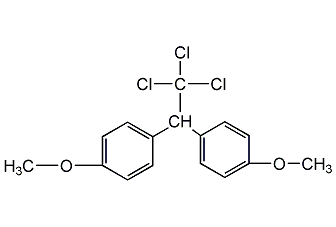
Structural formula
| Business number | 027P |
|---|---|
| Molecular formula | C9H10N2OS |
| Molecular weight | 194.25 |
| label |
2-amino-6-ethoxybenzothiazole, 6-Ethoxy-2-benzothiazolamine, 2-Amino-6-ethoxybenzothiazole |
Numbering system
CAS number:94-45-1
MDL number:MFCD00005788
EINECS number:202-333-9
RTECS number:None
BRN number:None
PubChem number:24890970
Physical property data
1. Properties: powder
2. Density (g/mL, 20℃): Undetermined
3. Relative vapor density (g/mL, air=1) : Undetermined
4. Melting point (ºC): 160-163
5. Boiling point (ºC, normal pressure): Undetermined
6. Boiling point ( ºC, 8mmHg): Not determined
7. Refractive index: Not determined
8. Flash point (ºC): Not determined
9. Specific rotation (º): Not determined
10. Autoignition point or ignition temperature (ºC): Not determined
11. Vapor pressure (mmHg, 25ºC): Not determined
12. Saturated vapor pressure (kPa, ºC): Undetermined
13. Heat of combustion (KJ/mol): Undetermined
14. Critical temperature (ºC): Undetermined
15. Critical pressure (KPa): Undetermined
16. Log value of oil-water (octanol/water) partition coefficient: Undetermined
17. Explosion upper limit (%, V/V): Undetermined
18. Explosion lower limit (%, V/V): Undetermined
19. Solubility: Undetermined
Toxicological data
None
Ecological data
Slightly harmful to water.
Molecular structure data
1. Molar refractive index: 56.11
2. Molar volume (cm3/mol): 149.0
3. Isotonic specific volume (90.2K ): 410.7
4. Surface tension (dyne/cm): 57.6
5. Polarizability (10-24cm3): 22.24
Compute chemical data
1. Reference value for hydrophobic parameter calculation (XlogP): None
2. Number of hydrogen bond donors: 1
3. Number of hydrogen bond acceptors: 4
4. Number of rotatable chemical bonds: 2
5. Number of tautomers: 2
6. Topological molecule polar surface area 76.4
7. Number of heavy atoms: 13
8. Surface charge: 0
9. Complexity: 179
10. Number of isotope atoms: 0
11. Determine the number of atomic stereocenters: 0
12. Uncertain number of atomic stereocenters: 0
13. Determine the number of chemical bond stereocenters: 0
14. Number of uncertain chemical bond stereocenters: 0
15. Number of covalent bond units: 1
Properties and stability
Avoid contact with oxides.
Storage method
Store sealed in a cool, dry place. Make sure the workspace has good ventilation. Keep away from sources of fire and store away from oxidizing agents.
Synthesis method
None
Purpose
None
extended-reading:https://www.bdmaee.net/nt-cat-la-303-catalyst-cas1066-33-4-newtopchem/extended-reading:https://www.cyclohexylamine.net/category/product/page/30/extended-reading:https://www.cyclohexylamine.net/dabco-xd-103-dabco-tertiary-amine-catalyst/extended-reading:https://www.bdmaee.net/cas814-94-8/extended-reading:https://www.bdmaee.net/dibutyl-tin-diisooctoate/extended-reading:https://www.newtopchem.com/archives/category/products/page/131extended-reading:https://www.bdmaee.net/22-dimorpholinodiethylether-3/extended-reading:https://www.bdmaee.net/dabco-dmdee-catalyst-cas110-18-9-evonik-germany/extended-reading:https://www.bdmaee.net/polyurethane-delayed-catalyst-8154/extended-reading:https://www.bdmaee.net/cas-251-964-6/















